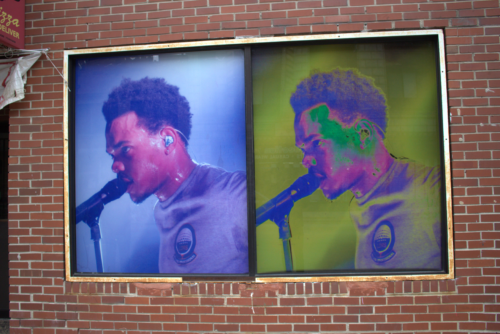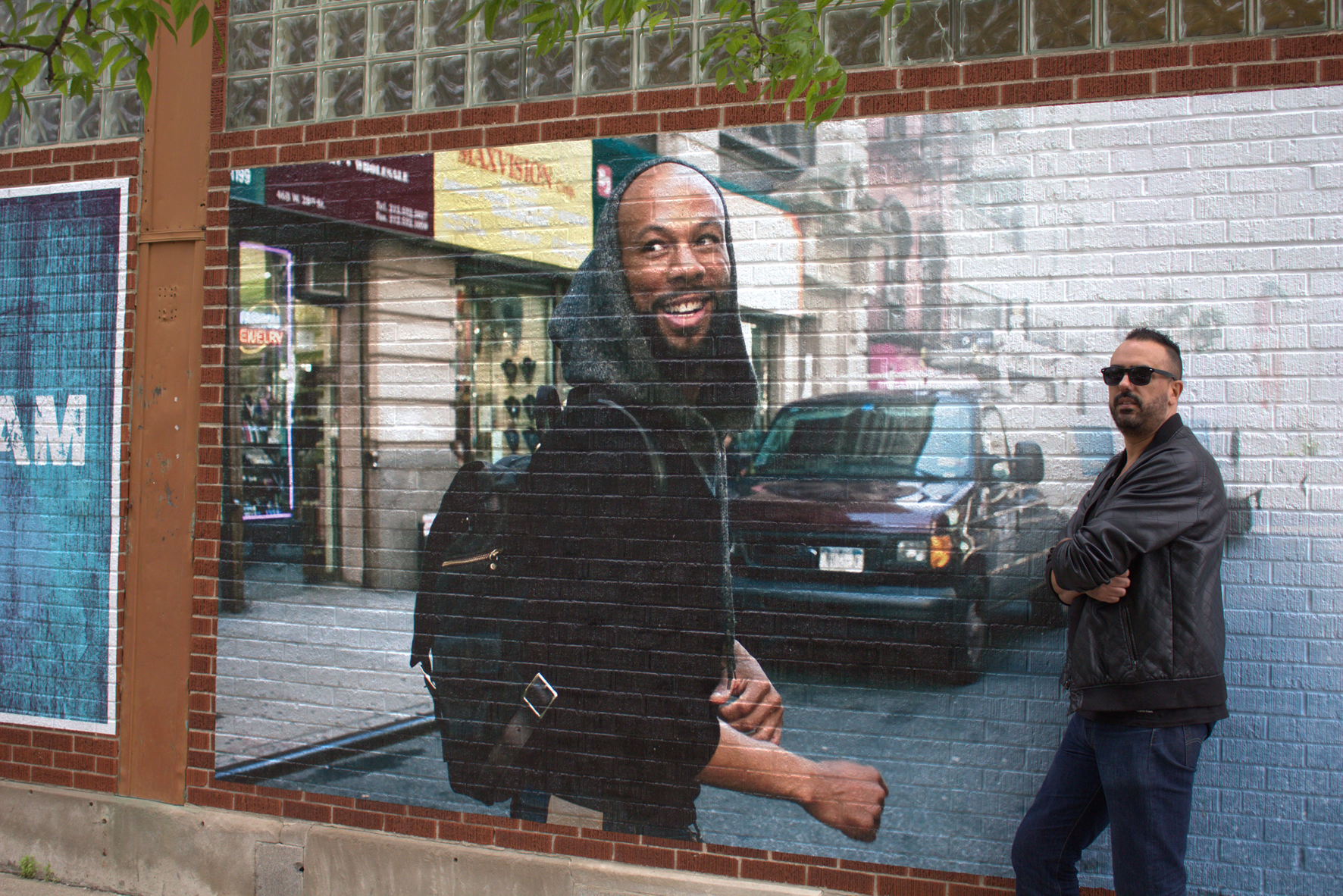New art has come to Chatham. The side of a storefront building at 79th Street and Evans Avenue is now home to “Chatham 2.0,” a mural project by Chris Devins that has attracted some national attention for its star-studded cast.
The main mural is composed of three distinct images: one declares “Chatham 2.0” in blue and yellow, while another simply states “You are beautiful,” and the last depicts the smiling face of rapper and Chatham native Common.
Around the corner, two contrasting images of another rapper and Chatham native, Chance the Rapper, are up on display. Shortly after they went up, these images of Chance and Common (surprise, surprise) went viral, showing up on hip-hop websites such as Pigeons & Planes, the BoomBox, and AllHipHop. The mural was commissioned by Eiran Feldman of First InSite Realty, which owns the building where the murals are painted.
Devins hails from Hyde Park, and has a degree in urban planning from the University of Illinois at Chicago; before he became interested in the intersection between art and urban space, he originally wanted to be a musician. Over the past few years he has worked on photorealistic murals in multiple Chicago neighborhoods, including projects titled “Hyde Park Heroes,” “Bronzeville Legends,” and the “Pullman Porter.” Devins’ aim with these pieces is not for his works to be seen as art pieces in the traditional sense, but for them to be “selfie stations”—interactive art for the community to engage with.
The interactive potential of Devins’ art aims to inspire Chatham residents to put forth more initiatives to build and grow their community. He says he tries to weave that knowledge of technical planning with his self-taught art ability. “It used to be that only rich people could do things for the community,” he says. “But now…you don’t have to wait to do things for yourself and [your neighborhood].”
It is his hope that when they see murals like “Chatham 2.0,” residents young and old will start projects of their own to develop the neighborhood. So far, at least, it seems that Devin’s emphasis on resident participation has paid off, creating a positive relationship between the art, the artist, and Chatham community members. While walking by the mural Devins has received smiles, waves, and greetings from people walking across the street. This reflects another aim of the “Chatham 2.0” murals, which is to uplift the attitude of community members. Devins creates with an explicit emphasis on evoking positivity in observers of his art.
“It is especially important for a community where people may not feel beautiful all the time, internally or externally,” he says. This commitment to affirming positivity comes from Devins’ belief that the real identity of many Chicago neighborhoods has been lost in a haze of negative portrayals by the mainstream media.
“Well, you know the media has a saying, ‘if it bleeds it leads,’ meaning they need news [about violence] to fill that hole,” he says. “They like to report a story that will shake everybody…so a lot of times, just by the nature of the business that they do, they report on negative stuff.”
To counteract these negative portrayals, Devins tries to use mural photos of successful residents of the neighborhood to illustrate that success stories are all around them. Devins chose Chance and Common for the Chatham murals because he perceives these two as “focal points” that embody the potential success of the entire neighborhood and instill pride in members of the community.
“People are like ‘Look at what we’ve got! We’ve got Chance, we’ve got Chance!’ ” he says. He also believes that a central part of affirming community identity is encouraging individuals from other parts of town to visit the neighborhood.
“You came over because you were interested in the identity of this community because Chance and Common are from around here,” he says, “and now it translates into economic sustainability, because now we’re spending a little money, we’re in the neighborhood, we’re making connections, we know a little bit more about the community—that’s the effect of public art.”

But although his projects have always been about building neighborhood identity, Devins doesn’t restrict his community building efforts to one neighborhood, because he believes divisions between neighborhoods shouldn’t exist in the first place.
“I’m going from community to community because they tried to separate us,” he says. “Hyde Park. Chatham. Bronzeville.” By keeping the theme of his murals constant across several neighborhoods, he hopes to promote a kind of unity between different communities on the South Side.
However, Devins’ work in communities such as Chatham and Bronzeville elicits the question: should he, an outsider in many of the communities he creates in, be the one attempting to enhance these communities?
Devins understands the sentiment and does admit that he is an outsider to some degree, but also thinks of himself as a “supporter of these communities” who aims to understand the “inside” of them. He claims to be the opposite of some muralists he describes as “occupiers,” who put their art in a community without connecting to the community or seeking to understand the community’s identity.
To supplement his understanding, Devins says he does expansive research on each community he goes into. For “Chatham 2.0,” for example, he looked into the historical past of Chatham, spoke with community leaders and the alderman, and, most importantly for him, got input from neighborhood residents. For Devins, this research culminates in a better idea of the art he wants to create and the feelings he wants to evoke.


Great article. I will be making a trip over to Chatham to see these great murals.
I love those murals, very interesting and real-like. Keep up the good work.